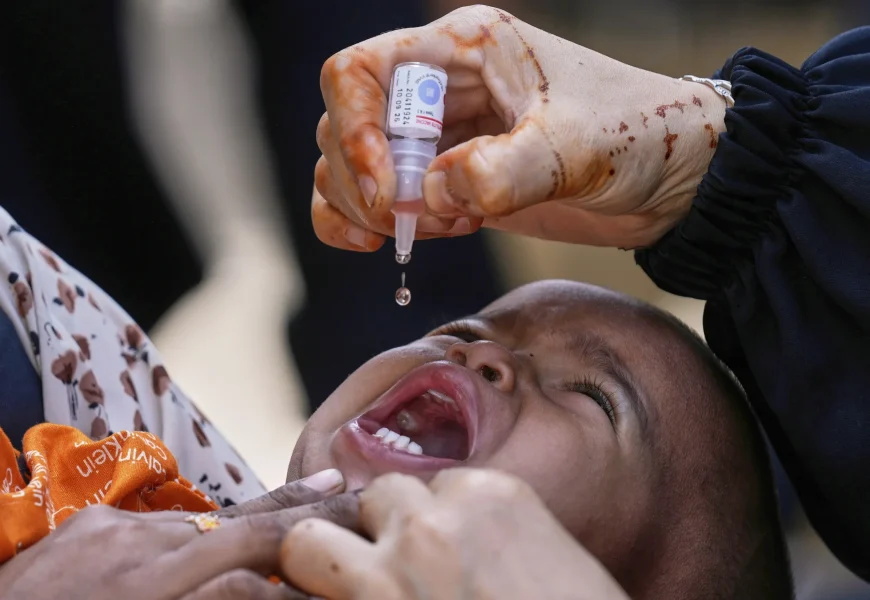KARACHI, Pakistan (AP) – For the past decade, Sughra Ayaz has traveled door to door in southeastern Pakistan, pleading with parents to allow children to be vaccinated against polio as part of a global campaign to wipe out the paralytic disease. She hears their demands and fears.
The world nearly beat polio. But fake records, an imperfect vaccine and missteps aided its comeback
KARACHI, Pakistan (AP) – For the past decade, Sughra Ayaz has traveled door to door in southeastern Pakistan, pleading with parents to allow children to be vaccinated against polio as part of a global campaign to wipe out the paralytic disease. She hears their demands and fears. Some are practical – families need basics like food and water more than vaccines. Others are simply unfounded – the oral doses are meant to sterilize their kids.
Amid rampant misinformation and immense pressure for the campaign to succeed, Ayaz said, some managers have instructed workers to falsely mark children as immunized. And the vaccines, which must be kept cold, aren’t always stored correctly, she added.
“In many places, our work is not done with honesty,” Ayaz said.
The World Health Organization and partners embarked on their polio campaign in 1988 with the bold goal of eradication – a feat seen only once for human diseases, with smallpox in 1980. They came close several times, including in 2021, when just five cases of the natural virus were reported in Pakistanand Afghanistan. But since then, cases rebounded, hitting 99 last year, and officials have missed at least six self-imposed eradication deadlines.


